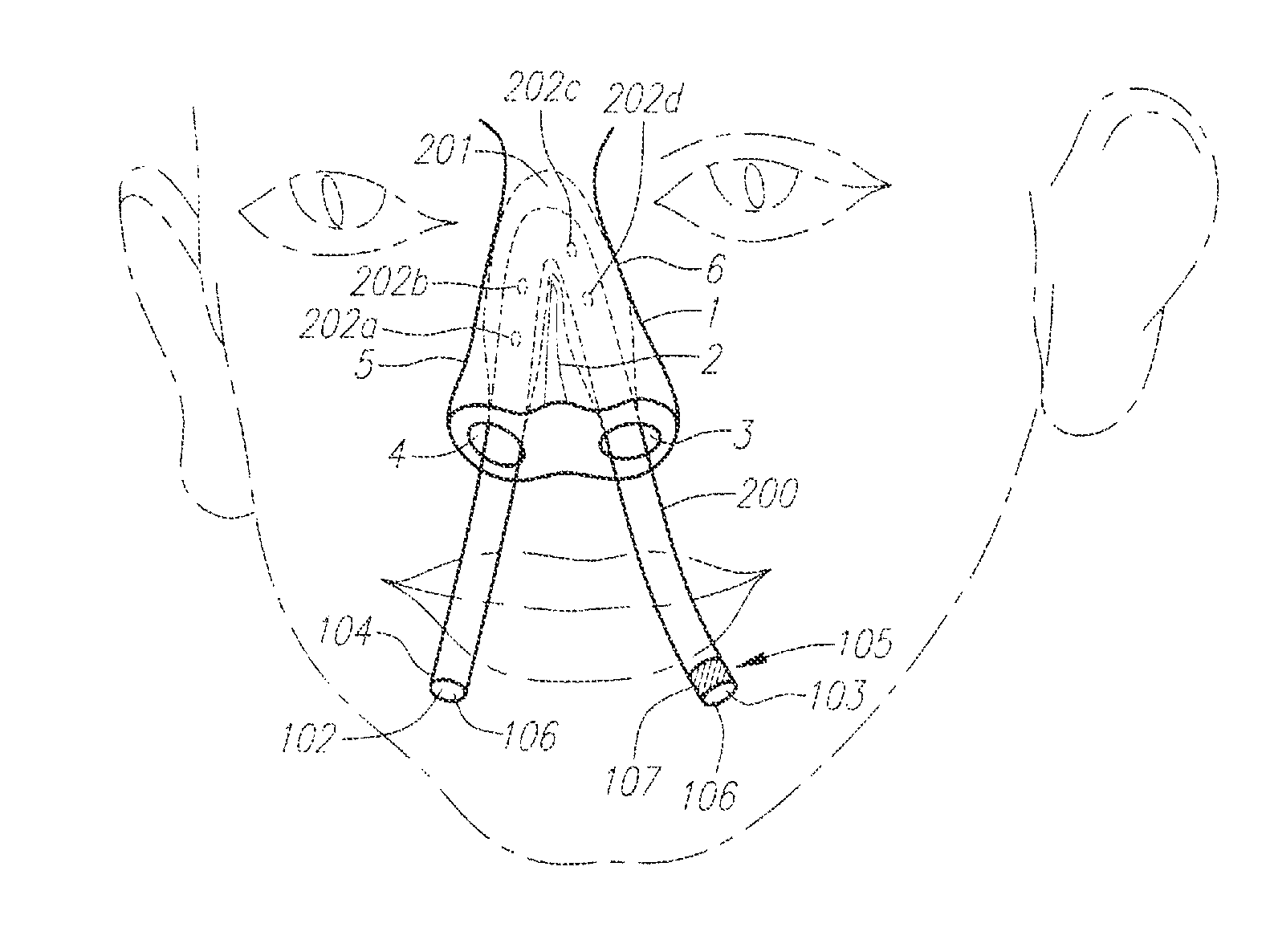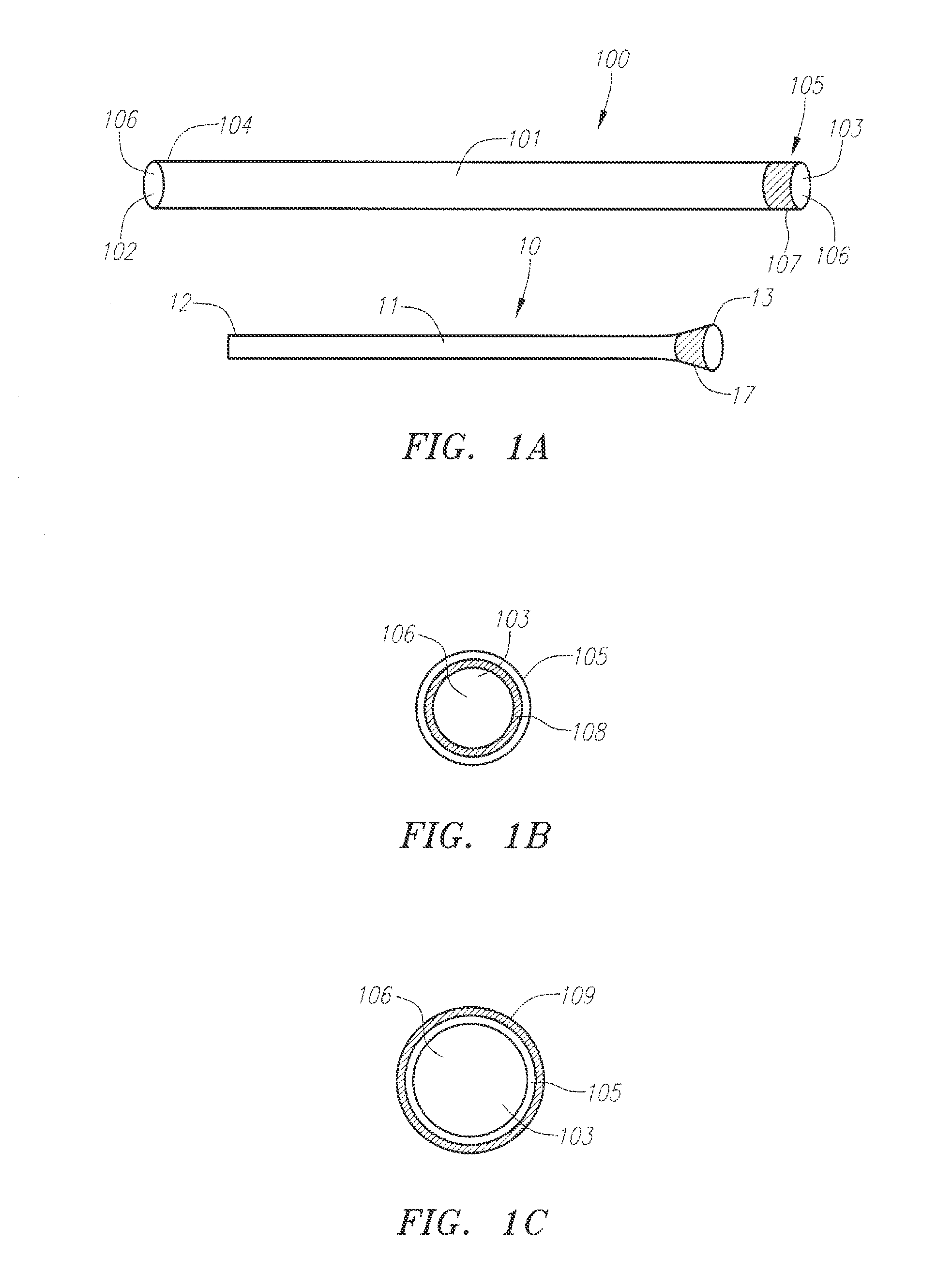Methods and devices for non-invasive cerebral and systemic cooling via the nasal cavity
a technology nasal cavity, which is applied in the field of cerebral and systemic cooling via the nasal cavity, can solve the problems of severe cardiac performance depression, neurological deficit to irreversible damage, and patients experiencing cerebral ischemia often suffering from disabilities, so as to reduce cerebral perfusion and minimize neurologic deficits
- Summary
- Abstract
- Description
- Claims
- Application Information
AI Technical Summary
Benefits of technology
Problems solved by technology
Method used
Image
Examples
Embodiment Construction
[0031]FIG. 1A illustrates a nasal catheter 100 for non-invasive cerebral and systemic cooling of the nasal cavity. Nasal catheter 100 comprises a flexible tubular member 101 with openings 102, 103 at each end 104, 105 of the tubular member 101 and a lumen 106 extending between the openings 102, 103. The flexible tubular member 101 has a length sufficient for extending through a patient's first nostril, around the nasal septum and out the patients second nostril such that the ends 104, 105 of the tubular member extend beyond the patient's nostrils. In some embodiments, the flexible tubular member can have a length such that the first and second ends 104,105 extend substantially beyond the patient's nostrils to allow for attaching the ends 104, 105 to a fluid reservoir and / or a pump for circulating a cold liquid through the lumen 106. The nasal catheter 100 is sufficiently flexible along at least a portion of the flexible tubular member 101 such that it can bend about 180 degrees to n...
PUM
 Login to View More
Login to View More Abstract
Description
Claims
Application Information
 Login to View More
Login to View More - R&D
- Intellectual Property
- Life Sciences
- Materials
- Tech Scout
- Unparalleled Data Quality
- Higher Quality Content
- 60% Fewer Hallucinations
Browse by: Latest US Patents, China's latest patents, Technical Efficacy Thesaurus, Application Domain, Technology Topic, Popular Technical Reports.
© 2025 PatSnap. All rights reserved.Legal|Privacy policy|Modern Slavery Act Transparency Statement|Sitemap|About US| Contact US: help@patsnap.com



